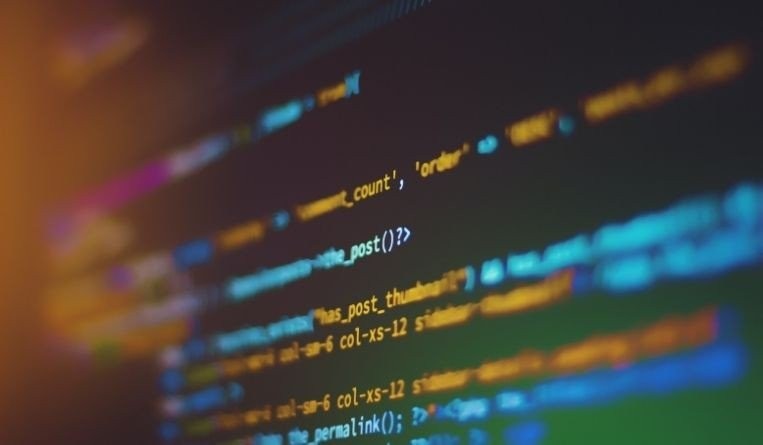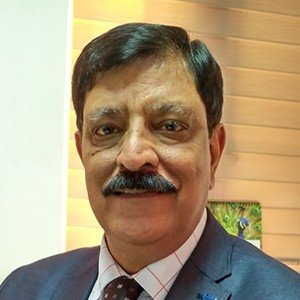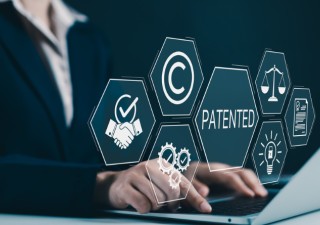The checkered journey of software secrecy to patents
28 February 2021

Publishers of software and computer programs have long struggled with how to provide their creations with intellectual property protection. D.P.S. Parmar details the checkered journey of software secrecy to patents.
Software is the heart and soul of every information technology-driven system. A programming tool or software development tool is a computer program that software developers use to create, debug, maintain or otherwise support other programs and applications. The most basic tools are a source code, object code, an editor and a compiler or interpreter, which are used ubiquitously and continuously. The vitals in the application of information technology comprises computers and software development tools or programming tools. Bits and bytes of software make the computer hardware to work in controlled and calculated manner. Creators of software source code and object code are also masters in creation of virtual knowledge capable of being recognized as intellectual property if not as industrial property.
The software industry has seen a phenomenal rise since 1953, when the first commercial software hit the market in United States. In the short span of two decades later, the industry has surpassed the revenue earned by hardware owners. Eventually economic value of transactions in computer software have now surpassed that of hardware sales. While the number of hardware manufacturers remaining relatively few, software companies continue to spring up rapidly. The mushrooming of the software industry is no longer limited to only few countries. This commercial success of the software industry, together with the ever-increasing demand for computer products and the relatively low cost of copying software, have set a stage for this industry’s present concern about ways of safeguarding against misappropriation of its products. Given the development and technological complexity of computer software, knowledge creators in this industry, courts and legislatures of almost all jurisdictions are finding it difficult to adapt their IPR laws to provide adequate proprietary protection for such products against the duplicators/ pirates. The software manufacturers have used trade secrets, contractual agreements and trademarks for proprietary software, copyright and now even patents as useful mode for protection of their computer programs /software tools.
Proprietary protection of computer software
Proprietary software was defined as those software which were protected under common law and these were subjected to limits against use, distribution and modification imposed by its publisher, vendor or developer. These proprietary software remained the property of its owner/creator and rights in the software was never transferred to the user. However, permission was given for its use by end-users/organizations under various strict predefined licencing or lien conditions. Some proprietary software were merely use-and-throw type or one-time use only. This dominant position of software developers came under criticism under unfair competitive practices in many countries.
Criminal remedy for misappropriation of proprietary software
The earliest used remedy for misappropriation of proprietary software was breach of contract where a third party was involved. In certain cases involving misappropriation by a company’s own employees, the owners of proprietary software used criminal remedies such as theft or larceny. The essential elements of larceny normally include actual or constructive taking and carrying away the goods of another, without consent and with felonious intent.
However, having recourse to criminal law to protect computer software has faced many difficulties. Earlier software was embedded or sold as an essential accessory to every hardware driven system, be it a computer, calculating, computing, transmitting, compiling, data storage and retrieving system, CAT scan, MRI system, etc.. These software were sold as proprietary software and their use was subjected to a complicated and complex licence agreement. These license agreements imposed many restriction on the use of proprietary software. The stumbling block had been that though the immense value of computer software was recognized and acknowledged by courts, it was difficult to categorize and qualify it as property under a state theft or larceny statute. What complicated the issue further was that the means employed to misappropriate such property would not constitute the requisite “taking” or “carrying away” that would be essential to prove theft in a court. Another remedy adopted to check the misappropriation of the proprietary software was to treat it as a trade secret and seek criminal remedies under theft of trade secret statutes.
Software as a trade secret
Software manufacturers normally seek express promises both not to disclose processes or know-how, or to use these secrets from for the purpose of competing from employees and third parties. In any event, where these precautions fail or the promises are not honoured by the employees or third parties, the manufacturers invariably seek the court’s indulgence under common law to prevent misappropriation of their secret software. In many countries, both injunctive relief and monetary damages are recoverable under a variety of legal theories, some statutory and others judicially fashioned products of the common law. In this unit, we will discuss legal safeguards available to software manufacturers. The software publishers invariably reserve some rights from licensees to use, modify, share modifications, or share the software. These proprietary software programs were popular as closed-source software or secret software. The owners of proprietary software seek remedies under criminal law for any misappropriation or theft of their trade secret.
Software misappropriation as theft
The earliest reported case involving theft of software was Hancock v. State, where the court faced difficulty in the state seeking to apply criminal law in a software theft case involving the appellant, an employee of Texas Instruments Automatic Computer Corporation. The indictment was in the ordinary form for charging felony theft. The appellant defendant, Hancock, a computer programmer, was charged with the theft of 59 “documents in writing,” i.e., computer programs which had been allegedly photocopied by him and offered to sell them to his employer's competitor at a price of US$5 million. In defense, he took a plea that the computer programs alleged to have been stolen did not constitute “corporeal personal property” and, therefore, could not be the subject of theft as he had never removed the originals of the programs from his employer’s premises. The Texas Court of Criminal Appeals applied the state penal code’s definition of property, which included “all writings of every description, provided such property possesses any ascertainable value” and observed that “it is evident that the computer programs as alleged and the evidence in support thereof show that such property is included and comes within the meaning of the provisions of the statutes defining the offense of theft.” It was concluded that computer programs fell within that definition. The habeas corpus relief petition of the defendant which averred that the only property he took – the photocopying paper – was of insufficient monetary value to justify his conviction for felony theft, was also unsuccessful. This case clearly demonstrates how defendants can seek to hoodwink the applicability of criminal law in the theft of the software of the employer.
In later cases, US criminal courts clearly demonstrated that criminal trade secret misappropriation law provides protection not only against theft of intangibles such as computer programs, but also against the unique methods of misappropriating computer property such as reproduction by hand or photocopying; memorizing the software and then reproducing it away from the employer’s premises; or even making and carrying away printouts of programs retrieved from the computer’s memory illegally without the consent of the employer.
As software became an invaluable tool to gain a competitive edge, the lure to its misappropriation also became eminent. Software manufacturers realized that criminal penalties alone would not provide a stringent deterrent to software trade secret theft-related activities. The secrecy of software was difficult to maintain and if anyone independently or accidentally found the secret software, the court would not favour the plaintiff. This lead to another question, that of clearly finding the important characteristics of proprietary software which would cover every aspect of its misappropriation. Cases like United States v. Bottone, 365 F.2d 389 (2d Cir. 1966), where the court indicated in dictum that memorizing a proprietor’s trade secret and copying it down in another state would not constitute interstate transportation of stolen goods in violation of 18 U.S.C. §2314 [(1976 & Supp. III 1979) 365 F.2d at 393.] left the owners of the propriety software remediless. Some authors believed that Comment b of the first Restatement of Torts (1939),whichexplained, generally, that an appropriator is one who:
(a) Discovered the secret by improper means, or
(b) [Acted in such a way that] disclosure or use constitutes a breach of confidence reposed in him by [others] in disclosing the secret to him, or
(c) Learned the secret from a third person with notice of the facts that it was a secret and that the third person discovered it by improper means or that the third person’s disclosure of it was otherwise a breach of his duty to the other, or
(d) Learned the secret with notice of the facts that it was a secret and that its disclosure was made to him bymistake.
This characteristic definition of trade secrets would clearly afford protection for computer software.
Legally important characteristics of proprietary software
To qualify as a trade secret, proprietary software should have following characteristics:
- It has to be bought from the legitimate owner.
- It must have a license which is the property of a developer, company or the owner.
- It was supplied without access to its source code.
- Free distribution or copy is prohibited under the licence agreement.
- Its use is restricted and subjected to the end-users agreement.
Why protect software as Intellectual property?
Software thefts were prevalent and growing despite some successful suits leading to restraining misappropriators with punitive sanctions under criminal and civil law. However, software proprietors realized that the common law protection afforded to check misappropriation of software is not always sufficient. The burden of proof imposed on a plaintiff was heavy and the flexibility of the courts to treat it as theft of trade secret vary from jurisdiction to jurisdiction. It was difficult, if not impossible, to sue international misappropriators who are located outside the boundaries of national jurisdiction. Moreover, trade secret misappropriation is very difficult to detect and prove. At times the product of a newly organized corporation that is found to be similar to that of a potential plaintiff, may simply turn out a product through independent effort. It is, therefore, not surprising that software manufacturers kept up their search for new and effective legal avenues to broaden their benefits and seek deterrent provisions in other intellectual property laws like trademarks and copyright and even patents.
Proprietary software protection under trademarks
The growth of the software industry brings with it not only special legal problems stemming from licensing such as the scope and effect of the agreement and restraints imposed on users but also the need for novel methods to check the misappropriation of their proprietary rights on the software’s secrets. Besides the applicability of civil and criminal law to trade secret thefts, software manufacturers also resorted to using trademark registration to protect their software products from infringement. This was purposefully done to make their products readily identifiable and distinguishable from those of their competitors.
Manufacturers of computer software have begun to seek the protection of the trademark laws in all jurisdictions. This attempt has been met with definitional impediments, as an increasing number of software manufacturers joined the race for securing trademark registration. However, the general applicability to the tenet of trademark laws to computer software depends first upon whether the software constitutes “goods in commerce,” the statutory description of protectable subject matter. The software manufacturers had already confronted this problem and found it an insurmountable barrier as the United States Court of Customs and Patent Appeals, in In Re Shareholders Data Corp., considered computer reports on the valuations of subscribers' securities portfolios to be conduits for rendering a service. They were held not to qualify for trademark protection as goods in trade. In another case, the registration to the petitioner in In Re Compute-Her-Look, Inc. was denied by the USPTO’s Trademark Trial and Appeal Board for the reason that computerized beauty analysis printouts were part of a service, rather than goods solicited in the marketplace for their intrinsic value to qualify as goods in trade. Nonetheless, software manufacturers like Data Packaging Corporation were successful in securing trademark registration of a trademark of the narrow, coloured band it affixed on its computer tape reels. Similarly, software developer Calvin Mooers used “TRAC” as a trademark to identify his languages, standards and computer services.
It was believed by trademark owners of software that customers will be able to look for a particular trademark and choose those products over the products of competitors once a brand had established its reputation for quality. Although trademark registration was seen as a potential remedy for preventing unfair competition in the computer software industry, it was found unsuitable to prevent competitors from wrongfully appropriating and using the technology behind the non-copyable trademarks. The field of availability of trademarks for software manufacturers bring with it the inherent difficulties associated with registration of such trademarks such as prohibition on the registration of a trademark that resembles one that is already registered if confusion, mistake, or deceit is likely to result from any such resemblance.
The Indian position on proprietary software protection under trademarks
While these developments were taking place in other countries, software manufacturers in India were also seeking protection of their products under trademarks law under the universally acknowledged doctrine of well-known trademarks. India also recognized that the owner of a well-known trademark has exceptional rights over the registration of identical or deceptively similar marks and also against their abuse. The trademarks law was codified in India to make specific provisions for safeguarding well-known trademarks under the Trade Marks Act, 1999 and the Trade Marks Rules, 2017 to provide statutory protection to well-known trademarks which were protected under common law under passing off rulings.
A well-known trademark is defined under the Trade Marks Act, 1999 as “in relation to any goods or services, a mark which has become so to the substantial segment of the public which uses such goods or receives such services that the use of such mark in relation to other goods or services would be likely to be taken as indicating a connection in the course of trade or rendering of services between those goods or services and a person using the mark in relation to the first-mentioned goods or services.”
India has been protecting well-known trademarks under common law for a very long time, well before such marks were defined and protected under the Trade Marks Act, 1999. The Trade and Merchandise Marks Act, 1958 did not provide for any specific provisions under which a well-known trademark was defined, and it was accorded protection only under passing-off action. Furthermore, there have been judgments by various high courts in India which provided for protection of the same. For example, the Delhi High Court in Microsoft Corporation v. Kurapati Venkata Jagdeesh Babu, held that “the trademark Microsoft is a well known trade mark. The same is known to most of the people in the entire world. No one is entitled to use the same either as a trade mark or part of its trading style/corporate name in relation to similar or dissimilar business as the said trade mark has got a unique goodwill and reputation.”
Software/computer programme protection under copyright law
The Indian Copyright Act, 1957 was amended in 1984 to accord protection to the authors of computer programs and software under copyright law. Inevitably, the question arose of how to categorize software as a “literary work,” protectable under copyright like any other literary work. Making application of the copyright subject matter doctrines to computer programs such as operating systems, video displays, nested hierarchies embedded in functional menus and other elements of software was not an easy task. Essentially, bringing software into the world of copyright was a statutory necessity. It also required fine tuning of copyright laws to bring software subject matter within copyright domain. Interestingly, a copyright grants the author an exclusive right to reproduce, adapt, publish, perform and display his work, and these characteristics of copyright lured software manufacturers to seek this form of protection for their products, as well.
Position in the United States
In the United States, the first application for copyright registration of a computer program was made on November 30, 1961. It took almost four years for the copyright office to publish Circular 31D in 1964,which guided the U.S. Copyright Office to consider and accept computer programs for registration under copyright law. Through that circular, the copyright office stated that the applicability of the federal copyright laws to computer programs would be weighed “in favour of registration, wherever possible.” These U.S. guidelines, however, failed to answer two tricky questions on the copyrightability of computer programs, the first being whether a computer program was the “writing of an author”and the second whether a reproduction of that program in the form actually used to operate a computer was a copy that could be accepted for copyright registration. It was not until 1976 when the new Copyright Act of 1976 was passed, these questions were answered in the affirmative and copyright on software and computer programs was declared as an enforceable IP right. In 1980, the recommendations of the national Commission on New Technological Uses of Copyrighted Works (CONTU) precipitated a revised section which provided further clarification on the extent to which a copyrighted program could be rightfully used and adapted bythe owner of a copy of that program. This act failed not only to set precise limits on such use but it also did not specifically address the fair use that others may make of copyrighted computer software. Moreover, unique problems exist in the software field in detecting and, thereby, proving infringement.
Position In India
When the copyright law reorientation was taking place in other jurisdictions to accommodate software under the copyright law, the 1957 Indian copyright law was also being amended, and in 1984, Indian law provided copyright protection for software and computer programs as defined by the amending act. The term “computer programme” adorned a new robe under Section 2(ffc) of the copyright act as: “computer programme means a set of instructions expressed in words, codes, schemes or in any other form, including a machine readable medium, capable of causing a computer to perform a particular task or achieve a particular result.”
Interestingly, all computer software are sets of instructions that form source code and object code. These words, codes, schemes, or other forms are the subject matter under copyright law as other creative works like a book, a movie, or a work of art. The plus point under copyright protection for software is that it extends up to the creator’s lifetime plus 70 years. Another aspect which attracted software developers to seek copyright protection was its inherent nature that it gets automatically protected at the time of its creation and that it was a cost-free option to protect any software.
Like the mushrooming of many trademarks for similar products, computer programs also suffer an inherent weakness that they can be easily copied and used by unauthorized persons. It is difficult if not impossible to detect and check the unauthorized copying of computer programmes. Since it is easy to manipulate and modify a computer programme, the duplicators often get away from the net of infringement suits under the cover of the fair use doctrine. This makes the software and application source code protected under copyright law susceptible to copying under fair use as the concept, and inventive idea cannot be protected under copyright law. The copyright act also failed to set precise limits on such fair use, and it does not specifically address the fair use limitation on others who can make use of copyrighted computer software. Consequentially, these unique problems associated with copyright in the software field made it difficult to detect and prove infringement.
If the concept and idea in the computer programme is novel and inventive, the software manufacturers rushed to protect it under patent law. If source code is a work of art for programmers, the inventive idea or concept behind the software is an invention under the patent law. Additionally, if the programmer is able to definitively define the date of its creation, it can be registered under copyright law by a simple deposit in the registrar’s office. Further, a series of improvements to the object code can also be registered as separate subject matter. This leaves the copyright holder engaged in seeking copyright registration continuously. It seems needless to point out that copyright subsists only in the expression of an idea and not in the inventive idea itself. Thus, copyright protection does not extend to the functionality of software programs. In order to obtain protection on the functionality of the software programs, the best option is to seek patent protection as well.
Software protection under patent law
The experience of software manufacturers on the protection of computer software during the last 20 years illustrates that the great interest of the software industry and the legal community has in this form of proprietary protection. It was believed that patent protection, though a bit difficult to obtain, is comprehensive and surpasses copyright and trade secret law in its benefits to the holder. Patents are preferred as they would afford software manufacturers with protection for both the substance and form of the inventive concepts embodied in computer programs. The patent right gives the patent holders a limited monopoly on their inventions, but they are enforceable without proof of unethical acquisition. Given these benefits, it is easy to understand why the software industry seeks to have its products included within the scope of patent protection. Be that the wish list of software manufacturers, the tricky questions of scope and extent of patentability of computer programs still remained unresolved in all most all the jurisdictions. Despite the patentability issues, the number of patent applications relating to computer programs are growing year-after-year the world over.
The Indian Patent Office (PTO), like other patent offices, constantly seeks resolution of pertinent questions relating to the patentability of software or computer programs within the precedents set by courts and the latitude left by prior case law and the flexibility available in the language and requirements of the patent law. Section 3(k) inter alia of the patent law excludes “or a computer programme per se” from patentability. In order to streamline examination of patent application relating to software or computer programs, the Indian patent office issues non-binding guidelines relating to the examination of computer software applications. These guidelines borrow definitions from copyright law and information technology law as these terms are defined under the patent law.
For instance the term “computer” means“3.2 Computer – The term ‘computer’ is defined in the Information Technology Act, 2000 (No. 21 of 2000) as ‘any electronic, magnetic, optical or other high-speed data processing device or system which performs logical, arithmetic, and memory functions by manipulations of electronic, magnetic or optical impulses, and includes all input, output, processing, storage, computer software, or communication facilities which are connected or related to the computer in a computer system or computer network.’”
And “computer software” means “3.4 Computer Programme – The term ‘computer programme’ has been defined in the Copyright Act, 1957 under Section 2(ffc) as ‘a set of instructions expressed in words, codes, schemes or in any other form, including a machine readable medium, capable of causing a computer to perform a particular task or achieve a particular result.’”
Position of patentability of computer software
The subject of computer software patentability remained in the limelight for the past three decades for the interests of both the software industry and the legal community in this form of proprietary protection. The legal community believed that patent protection is comprehensive, surpassing copyright and trade secret law in its benefits to the creators of software. Undoubtedly, patent cover provides broad coverage to software manufacturers by establishing their rights in both the substance and form of the inventive concepts embodied in computer programs, thus giving the patent holders a property right, enforceable without a showing of its unethical acquisition or reputation. Given these inherent benefits and advantages the software industry is now more inclined to use patent protection as useful option to protect its products involving functionalities. But the questions of whether and to what extent computer programs are patentable still remained unresolved in all jurisdictions. Courts and patent office computer program-related guidelines are being constantly sought to resolve these questions, within the precedents of leading prior case law. It is not surprising to know that initially, patent offices in almost all jurisdictions denied patent cover to the computer programmes.
Position in the United States
In the United States, for example, a software patent on the mere adding or multiplying of numbers were denied by patent offices until the courts allowed such a patent if it were unique and tied to a machine. Since software patents are treated as computer-implemented processes in the U.S., they are patentable if the applicant software describes some kind of identifiable improvement. Merely doing something that is known on a computer (like adding or multiplying numbers together) would be extremely unlikely to be favoured as patentable subject matter. So are mere ‘abstract ideas,’ and this argument has been used by the USPTO to refuse some software-related patent applications.
Position in Europe
In Europe, “computer programs as such” are excluded from patentability. A program for a computer is more likely to be refused patent protection by the EPO if it does not have the potential to cause a “further technical effect” beyond the inherent technical interactions between hardware and software.
Position in India
In India, also, the patent office takes this as official position and patents on the ‘computer programme per se’ are denied. However, in the recent appeal case in the Ferid Allani patent application involving a computer programme, the Delhi High Court and later the Intellectual Property Appellate Board (IPAB) resolved this question and ruled that that the patentability of a patent invention is tested on the fulcrum of “technical effect” and “technical contribution”. If the invention demonstrates a “technical effect” or a “technical contribution” it is patentable even though it may be based on a computer programme. It may be true that source code is not patentable, but that does not mean that every software invention cannot be patented. The IPAB has removed the clouds of uncertainty on the type of inventions excluded under the subcategory of Section 3(k), i.e., computer program per se of the Patents Act, 1970. Earlier, the Delhi High court remanded the matter for reconsideration by the Controller with categorical direction to examine the invention as a whole and the patent application deserves to be considered in the context of settled judicial precedents which have now laid down the interpretation of Section 3(k), the Guidelines and other material including the legislative material. Therefore, one way of determining whether a software invention will be considered patentable subject matter or not is by trying to judge whether the software invention offers a technical solution to a technical problem. The invention may be considered patentable subject matter if the software invention offers a technical solution to a technical problem.
The way forward
This checkered history of software secrecy to patent protection in almost every jurisdiction would, of course, leave the software manufacturers in a dilemma. But the right kind of expert advice can solve this mystery of whether to seek patent or copyright or trademark or trade secret protection where an inventive aspect is also associated with a software program or a process. In case the software program or a process has inventive aspects, then you should definitely explore the option of protecting it using patents, because the protection offered by a patent is much broader and stronger as compared to copyrights. The decisions in a case like Ferid Allani would surely encourage software manufacturers and trigger filing of more and more applications on software in India as well.








